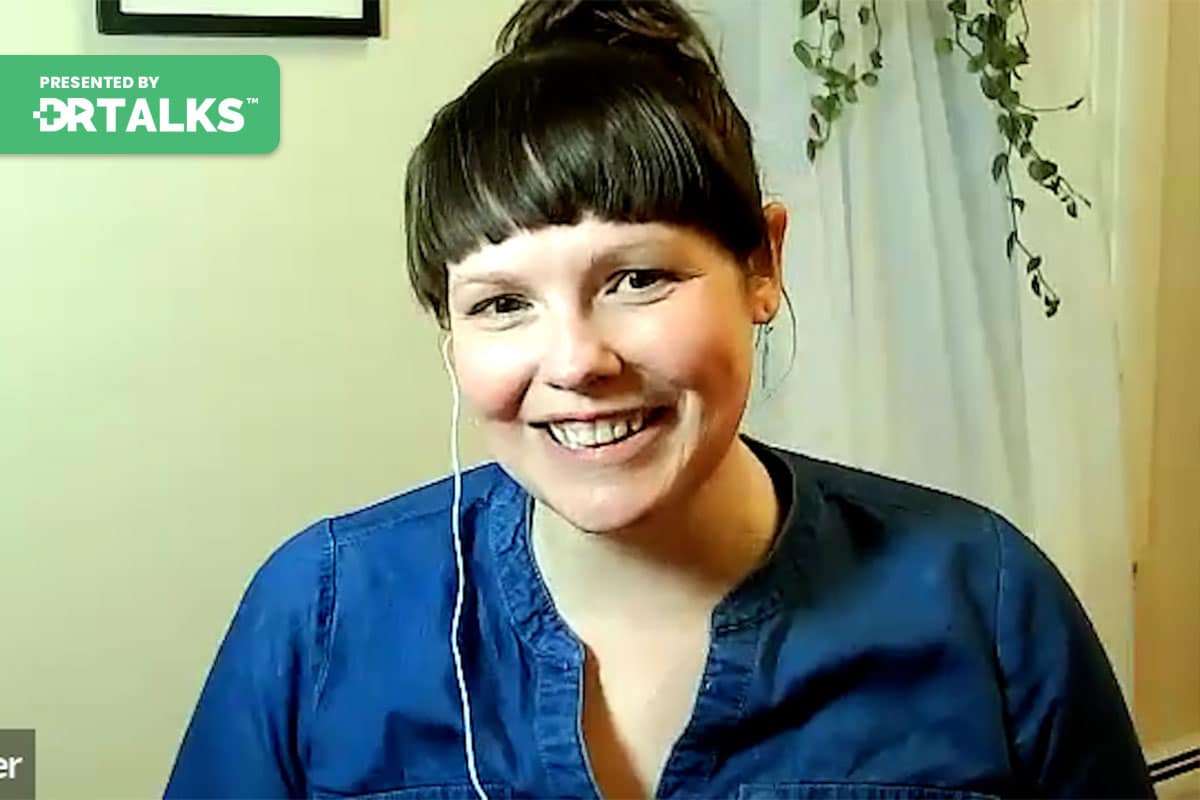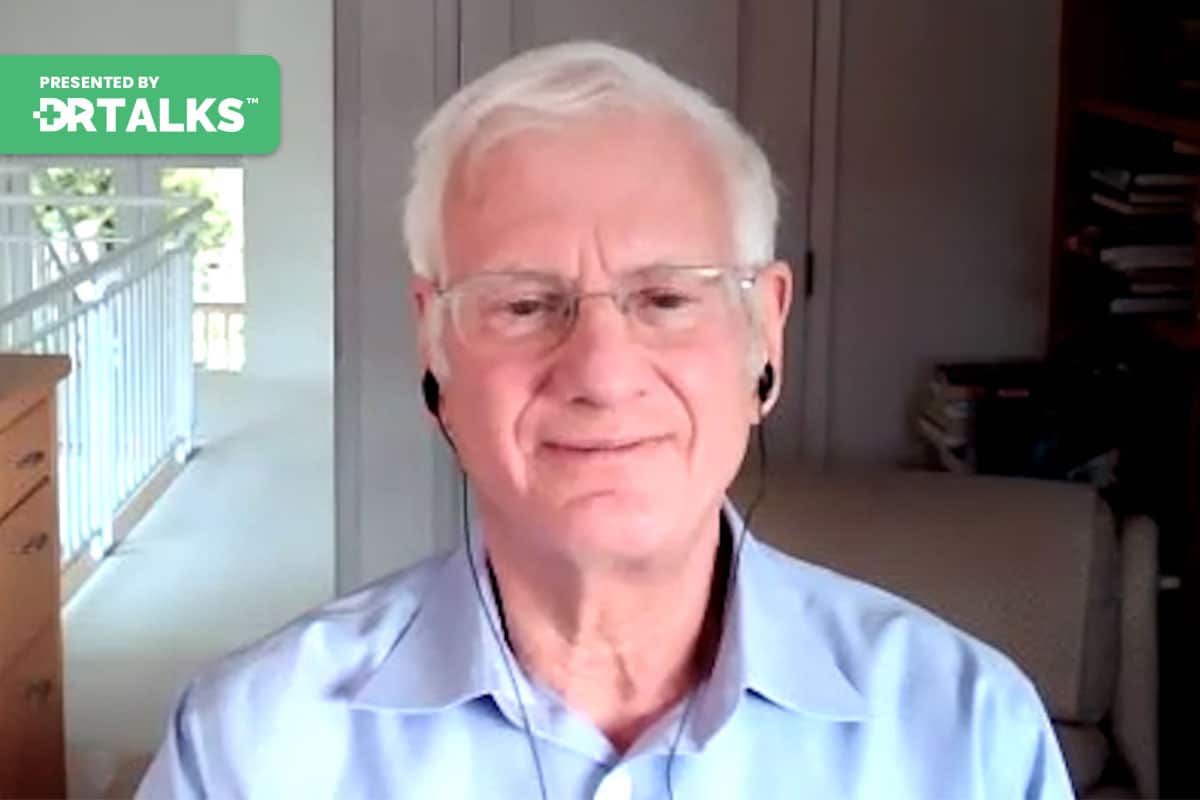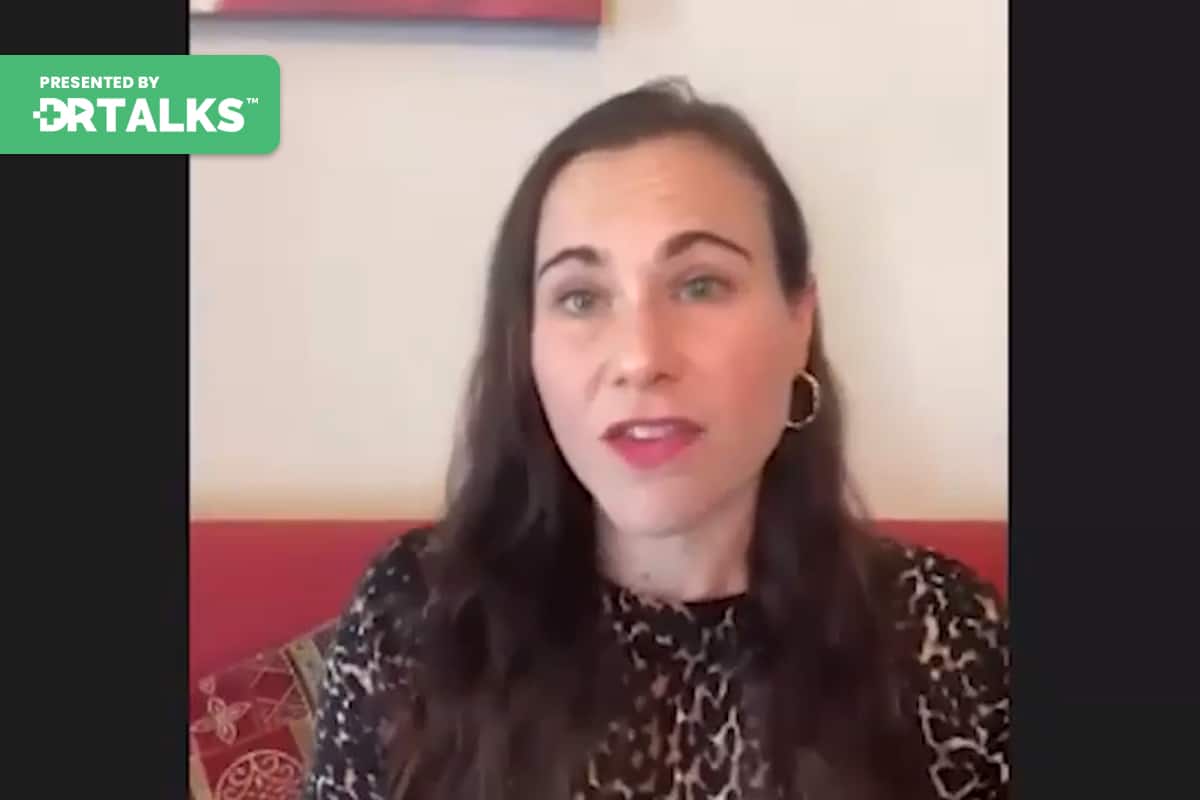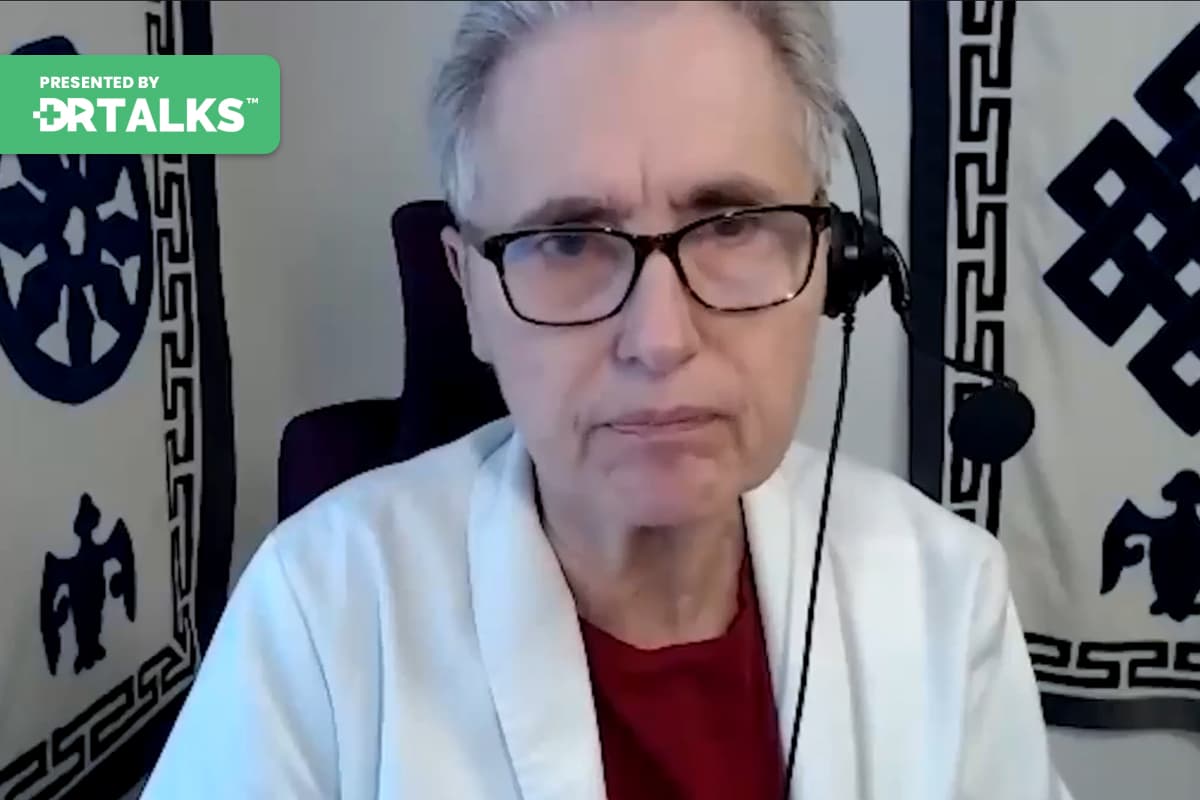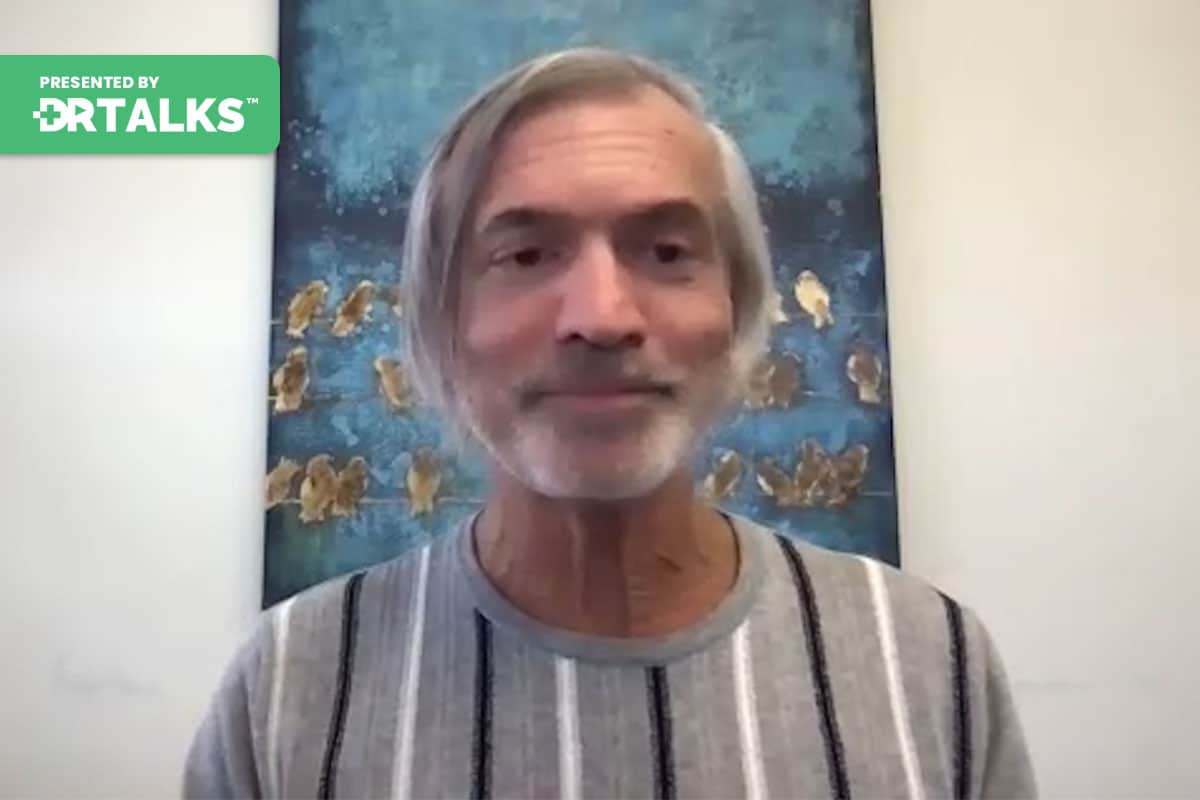Join the discussion below

Dr. Heather Sandison is the founder of Solcere Health Clinic and Marama, the first residential care facility for the elderly of its kind. At Solcere, Dr. Sandison and her team of doctors and health coaches focus primarily on supporting patients looking to optimize cognitive function, prevent mental decline, and reverse... Read More

Lauren Tessier, ND, is a practicing Naturopathic Physician licensed by the state of Vermont. Her practice Life After Mold in Waterbury, Vermont is the East Coast’s only formerly certified, CIRS-literate Naturopathic practice. Life After Mold services patients suffering from multi-symptom, multi system illness, complicated by co-morbid conditions such as MCS,... Read More
Dr. Lauren Tessier explains that mold and mycotoxins in the environment have negative health effects
- Discover how mold and mycotoxins breach the blood-brain barrier
- Understand how mold and mycotoxins cause negative changes to your immune system, tissues, hormones, and neurotransmitter
Heather Sandison, ND
Welcome to this episode of the Reverse Alzheimer’s Summit. I’m your host, Dr. Heather Sandison. And I’m joined right now by my dear friend and colleague, naturopathic colleague Dr. Lauren Tessier. She is licensed in the state of Vermont, and her practice is really focus on helping people who are suffering with mold and mycotoxins. She’s also heavily involved in Eisai, the where they’re dedicated to helping practitioners learn how to diagnose and treat environmentally acquired illnesses in their clients and patients. Her free booklet, Mold Prevention 101, is available on her website. So I can’t wait to introduce you to her and dove into these connections between mold maker toxins and how they affect the brain. Lauren, thank you so much for joining us.
Lauren Tessier, ND
Oh, it’s such an honor to be here. Thank you so much for having me.
Heather Sandison, ND
So let’s get into the nitty gritty right away. What are molds and mycotoxins and how do people usually get exposed to these?
Lauren Tessier, ND
Okay, perfect. So molds, I are kind of loosey goosey subset of this concept of fungi, right? There’s all these kingdoms of animal kingdom, plant kingdom, and then there’s the fungi has its own entire kingdom. Its that big. Within that fungi kingdom, there’s two major classifications. We have molds and we have these molds are a single cell or excuse me, yeasts are single cellular. They’re. They’re free flowing little dudes that cause their own chaos on their own. Whereas molds are multicellular, they’re lots little cells kind of enacted in these long filaments. And that’s what makes that kind of fuzzy look to mold. It’s that mycelium, right? So those are fungi. Those are molds. I can use mold interchangeably with fungi because yeasts are a concern for me too. But yeah, so molds they’re they are the organism that’s the issue at hand. Whereas Mycotoxins Mycotoxins are metabolites that are produced by these organisms. And these metabolites are super small. They pass into cells really easily. They love hanging out in fatty tissue, like the brain and the liver and even all of the adipose tissue we have on the body. And they the whole purpose of them is that they’re supposed to be these brilliance factors. And what does that mean? What does that mean?
In fact, research is still wondering why Mycotoxins exist. And the idea they’re thinking is that it’s a very inspector meaning that it’s what allows a bug or a little a bug or a microorganism to kind of gain a foothold in a body. It’s what gives them an upper hand. So when something has a certain virulence factor to it, it means that it goes in, it bites out other competing bugs, other competing fungi. Are there competing bacteria. And it also kind of pushes off the immune system, which allows it to be virulent. It allows it to get a foothold in the system. So Mycotoxins, from that perspective, you know, they ensure the mold survival, the fungi survival in the living system. So Mycotoxins are also interesting in that they work to protect themselves from being identified and then also being detox. So they have this amazing evolutionary ability to just kind of like evade heat, getting moved out from the body. So yeah, there’s and there’s so many, but only like 10 to 12 have actually been studied in human studies as, you know, causes of diseases.
Heather Sandison, ND
So that we know what issues they’re causing. So it sounds to me like you’re talking about two separate things or maybe even three separate things. There’s yeast, there’s Mulder fungi, and then there’s mycotoxins that are made by mold and fungi and geysers, and they wreak havoc in their own special ways. Yes. So I’m curious, how do people get exposed to them and how do we avoid ever coming into contact with these things?
Lauren Tessier, ND
And we know we can’t avoid ever coming into contact with these things because they’re everywhere. They’re ubiquitous. They’re flea free floating in the air, outside in the air, inside. The problem really occurs when it gets to be too much in an enclosed space. And so we tend to see a lot of these molds inside water damaged buildings. And so, you know, they the spores will come in from outside and the environment will be damp enough. It will have the right growing conditions for these molds to grow and thrive and cause illness. When they’re in the indoor environment, they can kind of breach, reach the body in a few different ways. And the main way is through inhalation. Sure, there can be a little bit of skin exposure that can cause issues to or even consuming them and swallowing them and getting them into the stomach. But the biggest issue, it seems in the animal literature is the inhalation component, which really brings us back to the importance of avoiding water damage buildings.
Heather Sandison, ND
Okay, so water damage building, this is like probably where we spend our time so it can be work school, home, bedrooms, especially, probably. But if I have like a small leak and it gets cleaned up, is that an issue or how do we know when it’s a problem and when it’s not?
Lauren Tessier, ND
Sure. Sure. So a couple more I want to add to that list is cars, camps, churches, schools. And, you know, all of these places usually have some type of history of water damage. In fact, there is about, I think, the the stat is 85% of commercial buildings have a current or history of water damage and about 50% of residence homes within the U.S. have either a current or history of water damage. So it’s not to say that mold is happening in all the spaces or active big growths of mold are happening in all the spaces. But just because the water is there doesn’t mean that the fungi is necessarily there and causing a problem. The issue is when you have water damage, you really want to make sure to get things dried out within 48 hours and 48 hours, a little loosey goosey, you know, 47 hours. You’re probably cutting it. But the goal is to have water damage dried out as soon as quickly as possible, over 48 hours. That’s really where the mold growth starts to take off.
Heather Sandison, ND
So you’re an expert. I’m just going to run this by you. Make sure I’m doing it right. Yeah. So I’ve had leaks, right? Like we had a dishwasher at Miramar that leaks. We’ve had, you know, the gasket. Where is out around the shower. Something in the shower. And then it was leaking back into the wall. And what we did was as soon as we realized it was happening, I don’t even know how long it was going on for before, but we had the drywall cut out and then dried it out, dried out the area. And then we tried to do a of course immediately, but sometimes you can’t even get a hold of someone. Right. So you’re it’s hard to figure all of these things out. And I’m, of course, very vigilant about it.
And then we had the area tested afterwards. We had it tested like a week later, once we thought it was dry and everything was removed that was damaged, we had it tested. And then what we did was we had it tested for moisture. So I didn’t test for mold at that point. I just tested to make sure there was no moisture on it. I know some people test for mold itself. Some people do air samples. Some people do like floor samples. They’re like this the Swiffer samples. Yeah, other people do all these other things. So where do you recommend like in terms of see someone has a weak in their roof. How do we figure out if it’s a problem? How do we know if it’s an issue or not?
Lauren Tessier, ND
The first thing I encourage people do to stop and think because there might be a situation and there is a reality somewhere out there in our parallel dimensions where it is not that bad and hopefully your reality. Right. But I really encourage people sorry. I really encourage people to work with IEPs, indoor environmental professionals to do their testing and sure, you can put out like the plates, the gravity plates that will collect things in the environment. You could do your own ermine, which is the dust and sweep or test. They also use a vacuum for that too. And I can clarify some of these if we need more clarification of your. But the nice part about having a professional come in and examine the space is they’re not just going to do the collection, but they’re going to be the Sherlock Holmes of the situation. They are going to come in with moisture meters if you get a good one. They come in with moisture meters, they’re going to come in with thermal imaging cameras and I really think the thermal imaging chemicals that the thermal imaging camera, our cameras are so hard to speak today. They are really, I think, what can make or break a good inspection, because when you use that thermal imaging camera and you hold it up to a wall and you see a temperature drop or change that can indicate evaporative cooling, that could indicate that there’s water or dampness there, that could indicate that that is a surface on which things will condense. And so having that thermal imaging camera, it allows you to see through walls. It’s not going to let you see the moisture through the walls, but it’s going to let you see the temperature difference and a building that’s really well insulate it. It shouldn’t have huge, huge swings in temperature. And so the thermal imaging camera, I think, is really, really key. And I mean, they are so expensive. So it’s not like someone who’s going to do a DIY is going to be able to go out and get like a $5,000 thermal imaging camera, you know. And so I really encourage people to work with a well-trained IEP who’s also mold illness, familiar mold illness, literate, because it makes all the difference.
Heather Sandison, ND
I’m already learning so much from you. Thank you. I’ve never even heard of this thermal imaging, but that’s fantastic. And also, now that you mentioned, I feel like I’ve seen it on a couple of patients reports and not really known how to understand it or what it was with meaning. So that’s super helpful, I’m sure, not only for me, my patients, but also for all of our listeners. So what’s the connection between mycotoxins or and or molds and yeast and the brain?
Lauren Tessier, ND
Yeah. Oh, my God. Yes. How much time do we have? But it goes as deep as you want. You know, I tell people that the brain is the main frame of the body. It’s the computer of the body. It controls moods. It controls your hormones, your endocrine system. It interfaces with your immune system. And that nervous system innovates every single organ. It touches everything throughout the body. And so the way that neurological complaints manifest with mold and micro toxin exposure, I mean, the list is huge. The list is huge. I think probably where to start is how maybe they get into the nervous system. Is that okay? I said.
Heather Sandison, ND
Yeah, absolutely. And I’ll just say that like my mold patients, brain fog and memory loss are at the top of those lists of complaints. And so like this and Dr. Anderson talks about this type three Alzheimer’s, which is a toxic type of Alzheimer’s. And these are the toxins Dr. Loren is talking about, the toxins that can cause type three Alzheimer’s. So they create inflammation that then leads to beta amyloid plaques and tao proteins and protein misfolding in the brain that is associated with Alzheimer’s. And so yes. How do they get in there?
Lauren Tessier, ND
Yeah. So the best way to think about it, or at least I tell people is the port of entry doesn’t matter so much. It’s as soon as it hits the highway, if you inhale it, if you eat it. Well, these toxins, once you get into a systemic circulation, it’s going to your left big toe. It’s go into your right shoulder, it’s going to your liver, it’s going to your kidneys, going to your brain. Systemic circulation hits everything. And so the way it gets into the nervous system is through the bloodstream. Mostly. Mostly the other way that it gets in through the bloodstream is through direct dissolution into the olfactory nerve. There are studies that have been done in animals that show that, yep, yep, the the insulation or like just putting a little cloud of mycotoxins into I think it was either a rat or a guinea pig into their nose resulted in the mycotoxins crawling up the old factory nerve, so to speak. And then causing severe damage to the point of tissue necrosis in the olfactory bulb in the brain. I know. And what is.
Heather Sandison, ND
So scary.
Lauren Tessier, ND
We see this with also, you know, I think it’s like under 2.5 microns for air pollution too. So it’s not just mycotoxins. I can climb up that old factory bulb.
Heather Sandison, ND
Knowing and you know, there’s the 2020 Lancet. It was July of 2020 when everybody was totally focused on a COVID. But there was a Lancet article that I probably referred to. You might have heard me say something about this and somewhere else in the summit, but there’s a commission report on Alzheimer’s, and one of the modifiable risk factors is pollution exposure. So it’s how much air pollution you’re exposed to. And these mycotoxins are essentially a type of air pollution. So even a very conventional, you know, the UK, very conventional, very high, highly respected journal is not even just suggesting but but basically drawing direct links between inhalation of pollutants and Alzheimer’s. So this is a really important thing to be considering.
Lauren Tessier, ND
Yeah. Yeah. And like I said, so for folks, it’s not just the circulation, but the olfactory bulb. It’s amazing. It’s a direct it’s a fatty highway, it’s a fatty slip. And lined up to the brain, you know, an unfortunate slip in the leg, although they’re not that much fun anyway. Right?
Heather Sandison, ND
Well, right. And in this, it’s like that. Just the anatomy, right? Like a geography. Our sinuses are so close to our brain. So you were talking about moles and our sinuses and our gut can be colonized with yeasts and molds themselves. Can you speak a little bit to that?
Lauren Tessier, ND
Yeah. So as we were just talking, we’re talking about the toxic piece, right? But the organism itself. Thank you for pulling this out. The organism itself can cause chaos in the presence or absence of the toxin. So you can be sick from the toxin or you can be sick from the organism. But this organism doesn’t have to make that toxin just as its own little do to around kicking around in your body. It’s going to shift a lot of your immune system functioning. It’s going to mess around with your tea helper cells. The things that help coordinate your immune system functioning. You know, it’s going to cause a lot of activation of some of your histamine and your allergic pathways. And, you know, and it’s also causing and potentially an infection, too, depending if it gets that virulence factor foothold there. So, yeah, it’s not just the mycotoxins that can cause a lot of this inflammation. It’s also the molds themselves. I like kind of teasing them apart because the mycotoxins cause the oxidative damage they cause that lipid peroxidation, whereas the organism itself, it’s really causing more inflammation independent of oxidative damage. That makes sense.
Heather Sandison, ND
And this gets complicated because you can have one or the other or both or. Right. And it really takes a doctor who understands this and can kind of pass this out. I think there are people who, you know, they get it. They’ve been in a water damaged building. They’ve been exposed to something like this. And all of a sudden, they have symptoms. And then they go to an allergist, say, and they’re testing for immune response to the mold, but not necessarily to toxicity or colonization. And they’re not seeing these other ways that that exposure can manifest detrimentally.
Lauren Tessier, ND
Right. And even from that allergic perspective, if you’re going to an allergist getting in the skin, prick testing, but they’re not doing anything to assess his demeanor, the reaction you can have a system allergic reaction to these molds in the absence of a true allergy. And it could just never pop up that it’s still kind of allergy-ish, you know? And I think one of the bigger trips is really trying to figure out when the brain fog and the fatigue and a lot of the other kind of mood stuff, if it is a direct result of the oxidative damage to the nervous tissue or if it’s a neuro excitatory issue from the histamine that’s being released from the kind of allergic ish reaction to the organism itself.
Heather Sandison, ND
Right. And certainly my experience with these patients is that they it all manifest very differently based on the individual. Some people become very sensitive to clothing other people, to foods, other people to environment, some people to all of them. And so finding a doctor who gets this and understands it and can help you unwind this pattern is really, really important. And these molds and mycotoxins both, they have this impact on them, on the immune system that can kind of perpetuate this hyper vigilance that can make us more and more sensitive. Can you speak to how you address that?
Lauren Tessier, ND
Let’s see. So, yeah, there’s there’s again, kind of like a 2 to 2 part aspect to it. We either have I’m going to talk about from the toxin perspective, but I also want to talk about it from the organism itself perspective. So the hypervigilance, when we’re thinking about it from a toxin perspective, I think about that bucket metaphor we have to we do we have a certain volumetric amount, let’s say, of how many toxins, how much toxic stuff that we can have in our system.
Heather Sandison, ND
So you have a full glass of water.
Lauren Tessier, ND
For that watch, acid.
Heather Sandison, ND
All sorts of water in her hand.
Lauren Tessier, ND
And so what ends up happening is, you know, there’s usually a output at the bottom and there’s also input going in on the top. And the whole idea is that we want our output ak our detox pathways to be able to clear out this cup and drain this cup. And during this cup what ends up happening is sometimes that output gets clogged. So whether that’s your genetics or your nutrient deficiency or a toxin slowing down your detox pathway is we block our outflow and then we start to fill the level of our toxin bucket up and up and up and up and up and up. And then we hit a point where it just overflows and over spills. And so that overflowing and that over spilling is those symptoms. So I find that the higher the toxin bucket gets filled, the more sensitive and hyper reactive people get to things.
So multiple chemical sensitivity and people who are just beginning their treatment with toxic mold issues and the multiple chemical sensitivity is like off the charts. They can’t walk down a laundry detergent aisle. They can’t go in the fertilizing aisle of Home Depot. I think their body just gets hyper vigilant to everything. So that’s from the toxin perspective, right? It’s too much for the body. We got to clear it out from the organism perspective, from the little fungi itself kicking around in the body. We have seen that there’s something about the polysaccharides or the carbohydrates in the cell wall of the fungi itself that can potentially immune system reactivity. There is a study that was done. It was either Switzerland or Sweden. I’m so sorry that I can’t recall which one where they had children who were exposed to mold in their school and they did allergy testing on these kids.
And what they found was that they did not have allergy testing that was positive to the models that were in the school. But what they did have allergy positivity towards was stuff their body had never seen before. Like it was priming their system. So stuff like horse dander, none of these kids, it’s like we’re riding horses in their spare time. So there’s this immune system priming and immune system confusion that can happen from having these organisms kicking around in the body. And could, you know, the toxins potentially interfere and cause some of that issue to for sure. But it really just seems like there’s something about the something in the cell wall that really primes the immune system to just react in a very allergic. And we say allergic because, you know, like splitting hairs about allergies and aging and all that stuff. But in a very histamine Nurkic way where the body just starts to freak out and just becomes reactive to so many things. And how I end up seeing that clinically is food intolerances, food intolerances, food allergies. And then once you clean up that colonization or clean up that infection, you start to see some of these food intolerances improve.
Heather Sandison, ND
That’s amazing. Yeah. And I share that clinical experience. Some people get sort of attached to their food intolerances, right? Oh, I’m never going to be able to have almond again or I’m never going to be able to have eggs again or whatever it is. And that as we and I kind of peel back the layers and understand what’s driving the dysregulation and that sensitivity, then we can get rid of it and then you can tolerate those foods again, get a bit get more variety back in your diet, which is really fun. I love seeing that it always has it. Whenever somebody is adding variety to their diet, I’m like, okay, you’re oriented in the direction of health. Let’s keep going that way. If we’re if we like going down and they have fewer and fewer foods that they can tolerate, that’s like not the orientation that we’re looking for.
Lauren Tessier, ND
No, no. And then to think about it from the other perspective, too, we’re sure we’re not getting a good amount of nutrients. We’re not getting a varied amount. But now something that’s supposed to be life sustaining for us and enjoyable is a threat like there’s so much about mold illness that turns the things that should be nutritive and soulful and really good for you into just trauma inducing things.
Heather Sandison, ND
So terrible. Okay, so talk about trauma inducing. Alzheimer’s is trauma inducing. Tell us a little bit more about how molds and mega toxins like how they cause both hormone and especially neurotransmitter dysregulation.
Lauren Tessier, ND
Sure, sure.
Heather Sandison, ND
And what can we do about it? Of course.
Lauren Tessier, ND
Right. So I think that keeping in mind that we so neurotransmitters can be impacted in a few different ways, we can interfere with the creation of them. We can interfere with their downstream signal, we can interfere with their levels by degrading them too quickly or too slowly. So all of those things can be modified by Mycotoxins. We saw that across the entire endocrine system and neuro hormones aren’t emitted. From that, we see that okra toxin can drop levels of serotonin. We also see something like T-2, which is a trickle at the scene, can boost levels of dopamine. And this is in animal studies, I have to be very clear about that. We aren’t doing this in humans because we can’t knowingly expose people to an isolated micro toxin. It is unethical and not allowed.
Heather Sandison, ND
So oka toxin and t2 are trigger two things. They’re both examples of maker toxins. Just to be clear.
Lauren Tessier, ND
Yes. Thank you for that. I appreciate that. Oka toxin actually. Yes. Yep. Oka a toxin is typically related to the aspergillus and penicillium molds where as Tita and other trickle, the scenes are often related to few cerium molds and also the infamous sticky, boisterous black mold. So it’s it’s not just shifting the levels of serotonin in dopamine, but they can also go and they can sit on some of the receptors for these neural hormones, like, for instance, Don, also known as Barmah toxin, sits on your serotonin receptors in your gut, your 5ht3 receptors. And so we see it messing with the neural hormones directly through metabolism and through sitting on the receptors. But you, I mean, you’re, you’re the queen of knowing a bit of this. When we start to get inflammation in the brain, I mean, all bets are off for normal functionality, oxidative damage aside, you know, as soon as you start bringing in any of your inflammatory cytokines, you’re going to start messing with the metabolism of all these brain balancing hormones.
Heather Sandison, ND
So this is directly going to impact mood and memory and cognitive function generally and energy levels. I mean, so many things, so understanding whether or not this is an element of your path towards cognitive decline is super critically important, in my opinion, and I’m sure that you share that with me. Do you have any fun stories about patients who’ve gotten a lot better?
Lauren Tessier, ND
Yes, I do. I let’s see.
Heather Sandison, ND
Sorry I didn’t prepare you for that, but it’s so fun to hear those stories.
Lauren Tessier, ND
Yeah, I. I’m going to modify a couple of things about it.
Heather Sandison, ND
Please do for patient privacy.
Lauren Tessier, ND
Patient privacy. So a middle aged woman who had a office in their home basement and it was after a flood here in Waterbury. Waterbury, Vermont, quite literally, he the namesake here. We have had two floods and one of the ones in 2011, Hurricane Irene, that resulted in just, you know, families emptying contents of their life into their lawn in front of them. I walked in here two years later, not really, you know, fresh out of school, ready to, like, do the thing and so this person had come to me because they were a just phenomenal athlete. They were in the tech sector. So they were building computers and programing and all these things and, you know, the fatigue. And so we did all the boring stuff, the B12, the iron check, the poor, you know, and we weren’t getting anywhere. And one of the big issues, one of the things that we were facing was that they were losing their memory. They were like, I don’t have short term memory. I’m freaked out. And my mom has Alzheimer’s.
Heather Sandison, ND
Oh, so terrifying. Right?
Lauren Tessier, ND
Right. And this was like one of my first experiences with mold and, you know, I believe this was just before some of the work that Dr. Bredeson was putting out. And something was like, ask about mold. And I said, what was going on in your home office, you know? And so it said, Well, it’s in the basement. And we cleaned it out. It’s fine. We remediated it. And I decided to do some digging and, you know, look into just the impacts of mold on cognition. And we know about like brain fog and fatigue, but there wasn’t tons of information at the time. It was the shoemaker protocol or Dr. Thrashers work or Dr. Campbell’s work. And that’s all you had, you know. So we asked them to reassess the space they did. And lo and behold, they still found some lingering issues. And then we worked on some detox support there, and this was very early on. So it was just like salutatorian, you know, like I was lucky. It was like that was, you know, the strict backbone there. And the scarier thing is that they said, I am middle aged and I am starting to worry about needing life insurance.
But if I go to them and I tell them that I have memory issues and my mom has had Alzheimer’s there, they’re not going to cover me. And so right off the bat, my first experience with all of this was do not ever let anyone code memory loss for you until you turn over every stone in the record. And so you look at every possible avenue because six months later, they were doing great. They were doing great. They were functioning. They were just back to normal. Back to normal. B You know, being able to run their business, being able to exercise and compete and it was just one of those moments where it was so life changing for me at least, to realize that something as simple as a lack of understanding about a disease state could have financially ruined someone, you know. So maybe it’s not a funny story, but I feel like for the first case that I ever had with regards to like mold, it was probably one of the more profound ones that had some really deep learning there.
Heather Sandison, ND
It’s interesting because I ask a lot of clinicians that question like, Do you have a great story? And often it’s that first patient that really changes your thinking about when they what’s possible, right? Because like you just mentioned, never good memory loss because the conventional wisdom out there is that once you have memory loss, you can’t get rid of it. So you’re stuck with that code attached to you forever. So it’s going to impact insurance. It’s going to impact life insurance, disability insurance, long term care insurance, all of it. And those kinds of moves can have these long lasting repercussions. And so it’s not that you’re trying to hide it, but the conventional wisdom is wrong. You write about reverse memory loss, and part of doing that is, like you said, uncovering every stone, really having a doctor who can help you figure out if there’s a pathway that you can that’s reversible, that you can walk back down in the other direction to get rid of the toxins, to get rid of whatever it is a cause that’s causing the inflammation in your brain, leading to memory loss.
And what a hopeful story. Right. They were able to regain their memory, their short term memory and get better and all of the other aspects of their health. And this is totally possible. It’s just a matter of seeing the right doctor. Now, you mentioned the timing. And I was like, oh, god, that was when I was following Shoemaker. It was like 2013, 2014, and it was like four grams of cold stare, I mean, four times a day. And I hurt people like I will own it. That was not the right thing to do. People got worse, not better. And so now we have the perspective this like the benefits of rest retrospect and the learning that we all kind of went through in the ten years ago, eight years ago, in figuring out how the right way to approach mold. And so I highly recommend seeing somebody who’s been trained either by Eisai or Neil Nathan. And really, I see I kind of came out of needing to find an alternative and bring in new perspectives to how to really address this very scary but very treatable problem.
Lauren Tessier, ND
Right. Right. And I was darn lucky that this person didn’t have, you know, co-morbid infections. You know, that was I was lucky that we were responsive to find her and included. I own like no melatonin, no low dose naltrexone, no. You know, like, I know peptides.
Heather Sandison, ND
It’s like basic naturopathy, but.
Lauren Tessier, ND
It was.
Heather Sandison, ND
Open the among trees, get them poopy and get them sweating. Yeah. Give them support for the liver and like and it worked. Give them the binders and make and good work.
Lauren Tessier, ND
Doc Yeah. You know it’s and I love, I love what I do and I think my happiest and I say in jest and my clients get to know my like sense of humor and stuff, but they graduate and I tell them, like, I never want to see you again. Go, You’re done by. I’m here. I’m here if you need me. I love you. I appreciate you. But like gtfo, you’re doing great, you know? And it just always feels so good when I can do that for people. Because I’ve also had the experience of being mold exposed, living in a moldy home. Not and this is after I had my first mold patient so you know, you got of and so I’ve had the personal experience of like not being able to count how many gallons of paint I needed for to paint these rooms in the house or you know, it’s just humbling. It’s humbling. It’s continually humbling working with mold. It’s amazing how much I don’t know. And I’m always think will to learn more and more and more. And that’s why I do a lot of the teaching that I do. That’s I’m involved in ECI. But yeah, it’s I love it.
Heather Sandison, ND
Well, thank you for the work you’re doing. There are so many patients who need, like you, who both get it from a personal perspective and also get it from a medical perspective and can get them the help and the resources that they need to fully get better. So tell everyone where they can find out more about your practice, what you have to offer. And then also we’ll make sure everyone knows that there is that Mold Prevention 101 that you can download through the summit right away.
Lauren Tessier, ND
Sure. Absolutely. Actually, that will be separate. That’s something that people can to my website. So my website is life after MLB.com. And if you sign up for my newsletter there, you can get the mold prevention 1 to 1 e-book. And that’s really going to walk you through your home to look for hotspots. So, you know, reminding you like, do you have French drains? Where is your wet wall? How does your dry air vent? So that way you have almost like a scorecard awareness of all the possible issues that could lead to water damage in a home. So that’s free and available. At my website. There is a pop up.
So if you have pop up lockers and they want to undo that sign up there and then you can also find me through pretty much all social media platforms with the handle life after mold and then for the summit today I do have a mold metabolites and mycotoxins mycotoxins sheet cheat cheatsheet that will go over what molds are correlated with what mycotoxins you might be finding on your urine tests and also what system of the body that they really have an affinity for that they really have an impact for. And so that should be available for you through the summit. And yeah, I hope that people connect, reach out, find me on social media, have some fun and yeah, I’m so appreciative for this opportunity and to be able to share this info with everybody.
Heather Sandison, ND
Thank you so much for spending your time and sharing this wisdom. It’s so, so beneficial. Lots of goodies so you can get all the tons of super helpful information for free. Right now. Go get that from Dr. Lauren. And we’re so grateful to all of our audience who joined us and certainly grateful to you for sharing your time and wisdom. Thank you.
Lauren Tessier, ND
Thank you.
Downloads

